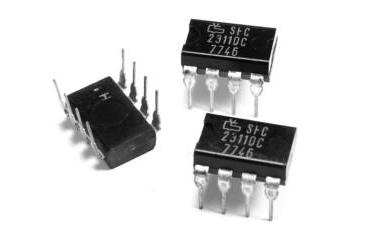
In modern electronic devices, comparators play a fundamental and critical role as essential analog components. They not only serve irreplaceable functions in signal detection, conversion, and control, but also, due to their high-speed response and high precision, have become core components in the design of various complex electronic systems. This article will provide a thorough introduction to comparators, covering their definition, working principle, types, key features and advantages, as well as typical applications.
Catalog
IV. Characteristics and Advantages
I. What is a Comparator?
A comparator is an electronic component used to compare the magnitude of two input signals. Based on the relationship between the input voltages, it outputs a corresponding digital level. Simply put, a comparator compares two analog signals and outputs either a high or low logic level, indicating which input voltage is higher. Similar to an operational amplifier, comparators generally operate without negative feedback loops; therefore, their output is typically saturated at either a “high” or “low” level.
II. Working Principle
Inside a comparator is a very high voltage gain stage that sensitively detects even small voltage differences between its two input terminals. Its operation can be summarized as follows:
· When the voltage at the non-inverting input (+) is higher than the voltage at the inverting input (−), the output switches to a high level (usually close to the supply voltage).
· When the voltage at the non-inverting input (+) is lower than the voltage at the inverting input (−), the output switches to a low level (usually close to ground).
This open-loop operation mode allows the comparator to respond extremely fast, making it ideal for rapid analog signal judgment and conversion.
III. Types of Comparators
Depending on different application needs, comparators can be categorized into the following types:
· Open-Loop Comparator: The most basic type, offering fast response speed and suitable for simple voltage-level comparison.
· Hysteresis Comparator (Schmitt Trigger): Incorporates positive feedback to introduce hysteresis, reducing noise-induced oscillations and improving system stability.
· Window Comparator: Features two threshold voltages to detect whether the input signal lies within a preset voltage window, commonly used in battery voltage monitoring.
· Differential Comparator: Specifically designed to compare the difference between two input signals, frequently used in high-speed signal processing and communication systems.
IV. Characteristics and Advantages
Comparators have several notable characteristics and advantages:
· High-Speed Response: Without negative feedback, comparators can achieve much faster response times, suitable for high-speed signal processing.
· High Gain: Their high voltage gain allows them to detect very small input voltage differences accurately.
· Low Power Consumption: Many modern comparators are designed for low power, making them ideal for portable and battery-powered devices.
· Versatile Output Configurations: Comparators can offer various output types, such as push-pull or open-drain outputs, to meet different application requirements.
V. Applications
Comparators are widely used in electronic systems, including but not limited to:
· Analog Signal Processing: For signal selection, peak detection, and level detection functions.
· Control Systems: To compare input signals with preset values and trigger control commands in automated control systems.
· Sensor Applications: To determine whether sensor feedback signals have reached a certain threshold.
· Digital Systems: To compare the magnitude of two binary numbers, supporting logical operations and state judgments.
· Power Management: For battery charge monitoring, over-voltage protection, and under-voltage protection functions.
VI. Conclusion
As an essential part of electronic systems, comparators—with their variety of types and broad applications—play a key role in a wide range of electronic devices. With ongoing technological advancements, comparators continue to improve in performance, power efficiency, and response speed, meeting the demanding requirements of modern high-performance, low-power electronics.




